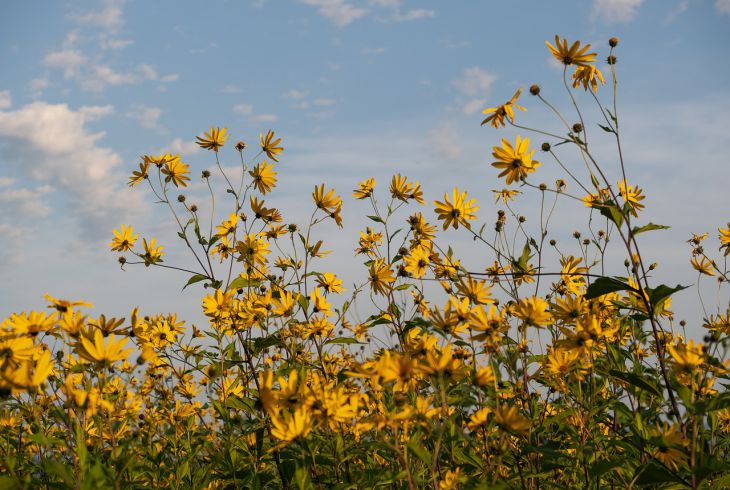Jerusalem artichoke on the plot: to breed or to destroy
Back in 17th century Russia, Jerusalem artichoke, otherwise known as earth pear, was used as a medicine, with its tubers infused in wine and this infusion used to treat heart disease.
And now Jerusalem artichoke is actively used in the production of medicinal preparations, but most owners of summer cottages and garden plots consider Jerusalem artichoke a weed, or at best an ornamental plant that does not require care and attention, resembling a sunflower, without taking into account its usefulness and agronomic closeness to potatoes.
Let us turn to the opinion of the expert of the online publication "Belnovosti" and scientist-agronomist Anastasia Kovrizhnykh.
But growing Jerusalem artichoke is much less troublesome than growing potatoes.
Let's start with the fact that once planted, Jerusalem artichokes can be harvested for four to five years. For sowing, tubers no larger than a walnut are used, which should be placed in water for several hours before planting to become elastic, since in the open air they quickly wither and wrinkle.

Before planting, the soil needs to be thoroughly enriched with organic matter: up to a bucket of humus under each tuber.
The planting pattern is more spacious than for potatoes: the distance between holes is 60-70 cm, between rows - the same, the depth of the hole is 8-10 cm.
In the first year after planting, to retain moisture, the soil needs to be loosened 2-3 times per season, and stems that have reached a height of 1 m need to be hilled up.
By choosing a place on the edge of the plot for planting Jerusalem artichoke, you will get not only a vegetable plantation, but also a "gapless" hedge that will reliably protect you from unwanted views, and your plantings from a cold wind, if one suddenly happens.
In the fall, by cutting the stems at a height of half a meter, you will turn this fence into a snow retention strip. For the same purpose, I personally do the fall harvest, digging up the tubers not in a row, but every other plant, selecting only the large tubers. The small ones remain in the ground - this is already sowing for the next season.
Undug Jerusalem artichoke tubers will overwinter in the ground very well, as they are not afraid of frost, and in the spring you will get a fresh vegetable for your table as soon as you manage to dig it up. Again, the small stuff remains in the ground - sowing.
The second season is just harvesting (autumn and spring). No weeding is needed (there are practically no weeds, the overgrown Jerusalem artichoke suppresses everything) or loosening. The tops should not be mown until the leaves wither in the autumn. I do not mow them at all, and when harvesting I put the stems to the side, in bunches, and in the summer - through a shredder. It makes excellent mulch!
In the third and fourth years, the Jerusalem artichoke plantation is thinned out (otherwise the tubers become smaller, and you can't get your hand through the wall of stems). And you need to feed the pear tree, mulching it well with humus (it will mix with the soil during the autumn and spring harvesting of tubers).
The fifth season is the final one, after it everything will start all over again, carefully removing all the remains of the former luxury. Or it can be "fallowed", and a new plantation - in a new place.
The same dishes are prepared from Jerusalem artichoke tubers as from potatoes.
Earlier we wrote about why summer residents collect pine cones.
